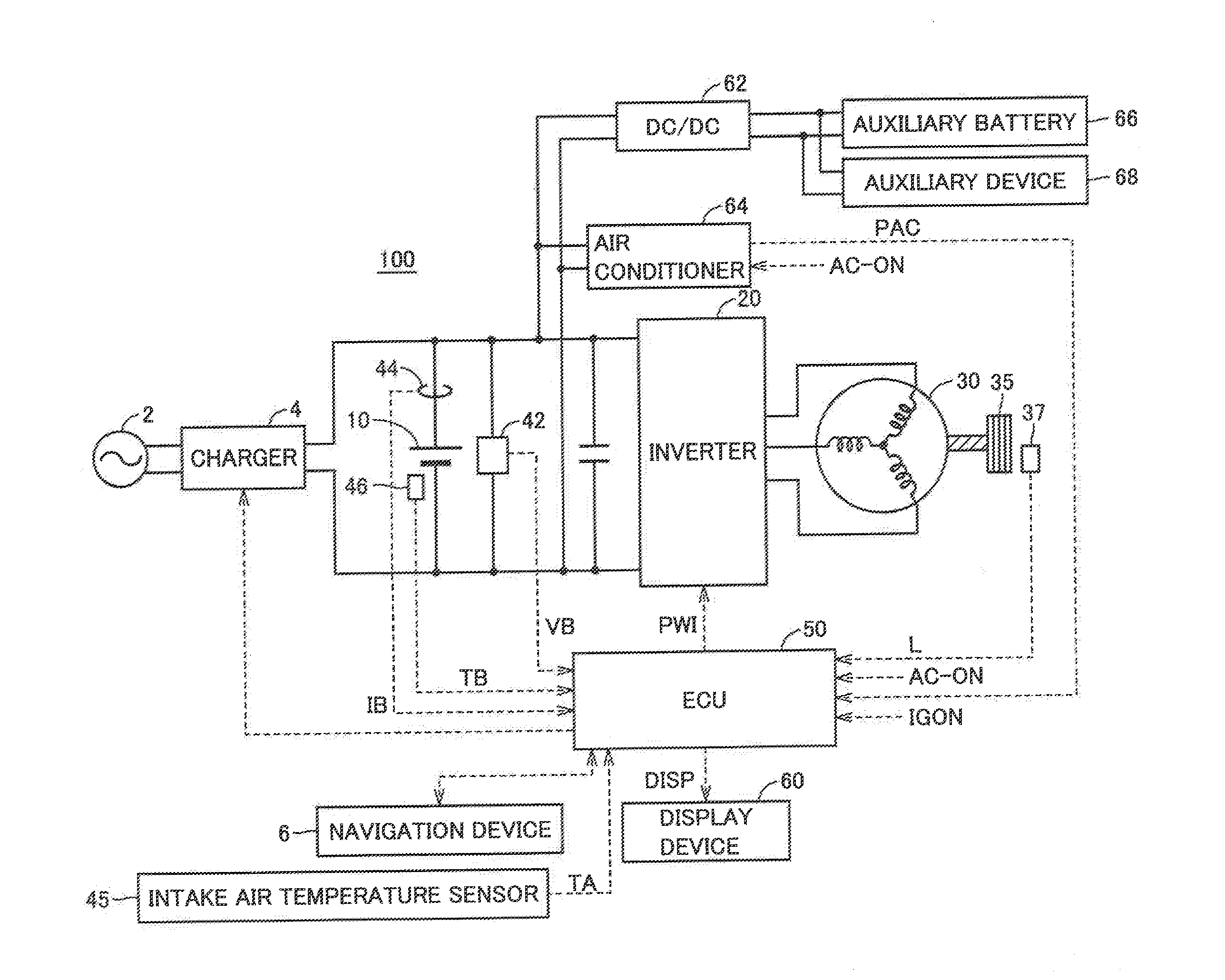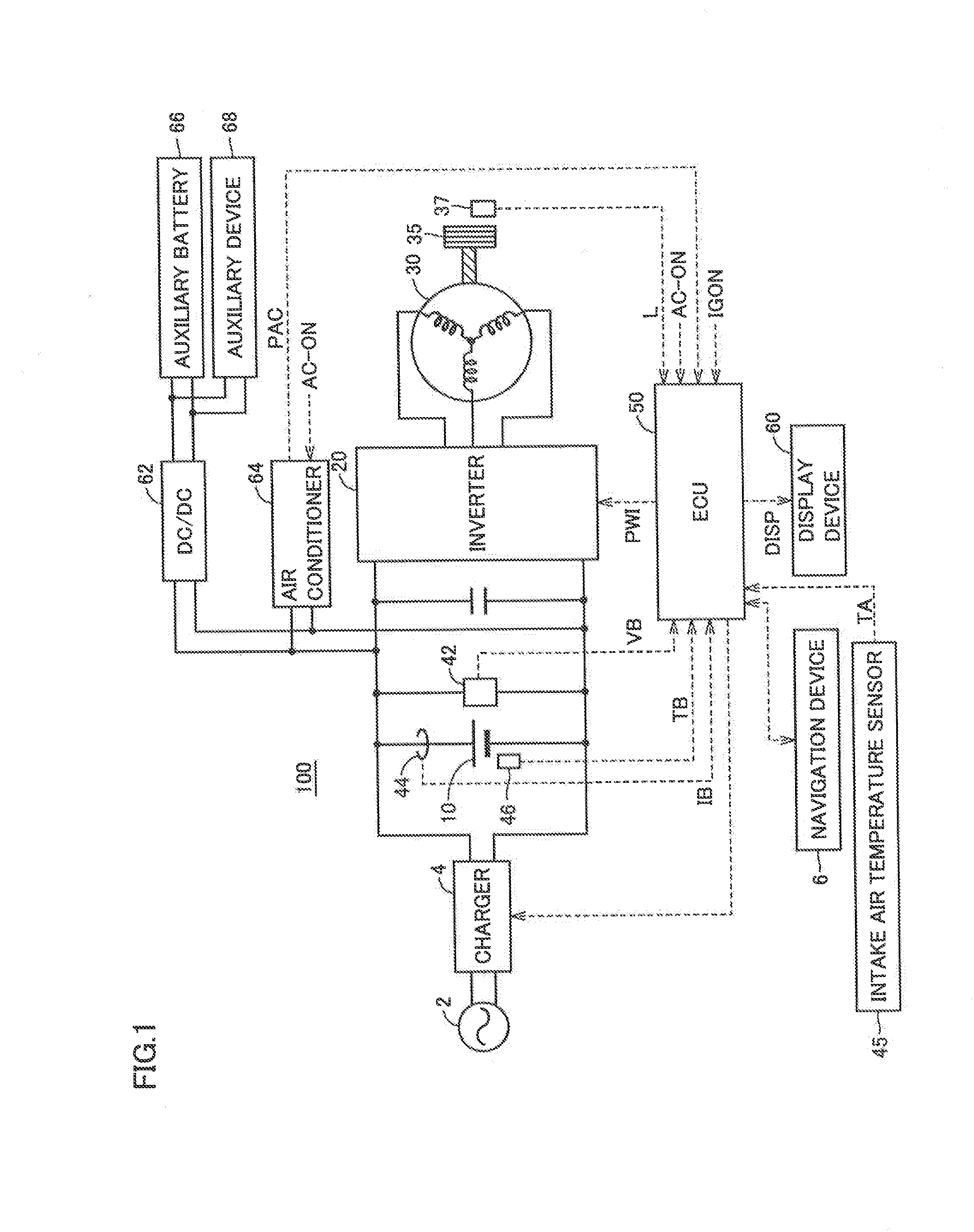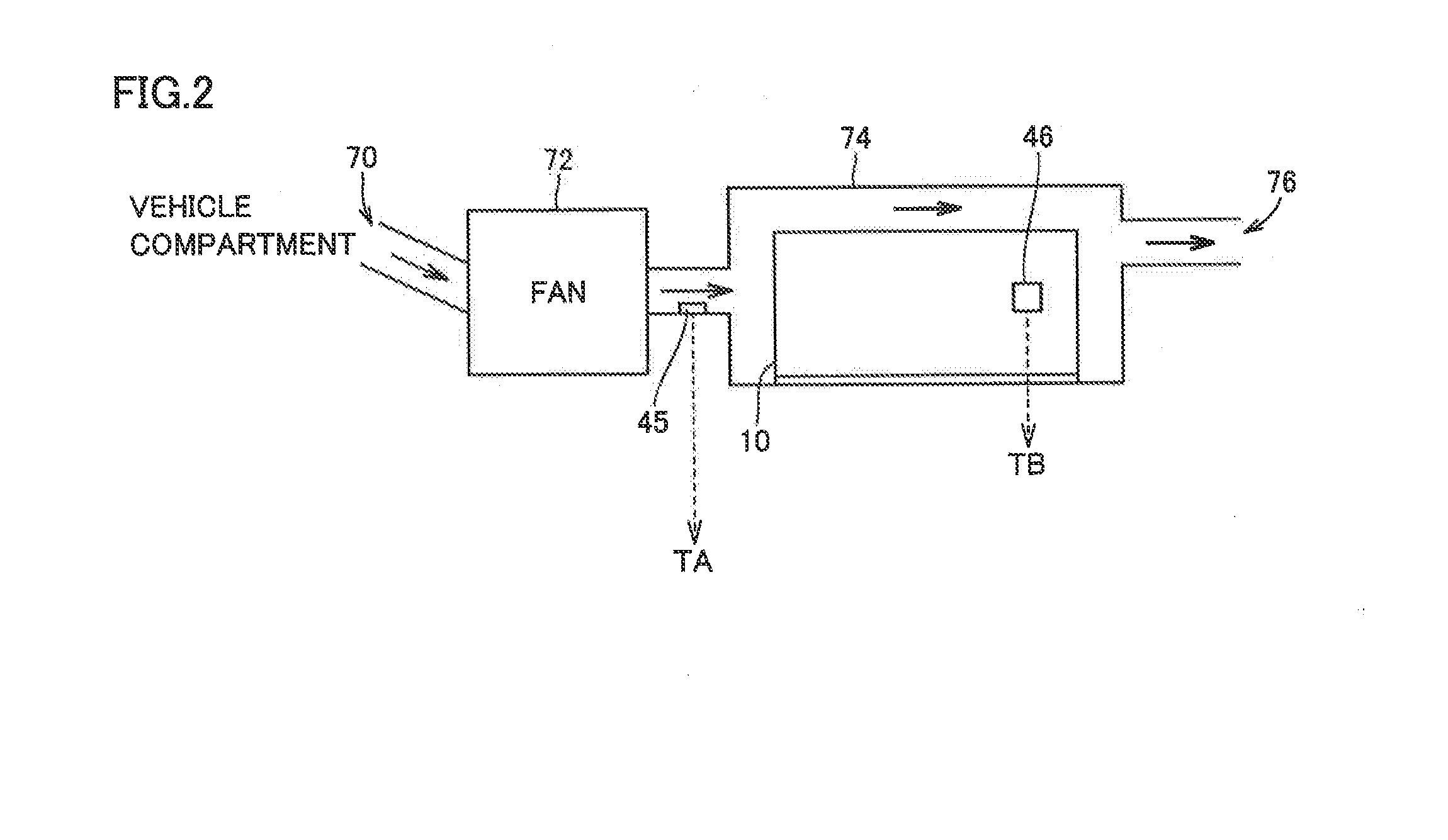Charging device and charging method
a charging device and battery technology, applied in battery/fuel cell control arrangement, battery/fuel cell control, electrochemical generators, etc., can solve the problem of charging time becoming an issue, and achieve the effect of reducing the temperature increase of the vehicle-mounted power storage device and long-distance running
- Summary
- Abstract
- Description
- Claims
- Application Information
AI Technical Summary
Benefits of technology
Problems solved by technology
Method used
Image
Examples
first embodiment
[0030]FIG. 1 is an entire block diagram of an electric powered vehicle according to an embodiment of the present invention.
[0031]Referring to FIG. 1, an electric powered vehicle 100 includes a battery 10, an inverter 20, a motor generator 30, and a driving wheel 35. Electric powered vehicle 100 further includes a voltage sensor 42, a current sensor 44, a temperature sensor 46, a wheel speed sensor 37, an electric control unit (ECU) 50, a display device 60, a navigation device 6, an intake air temperature sensor 45, and a charger 4. Intake air temperature sensor 45 measures the intake air temperature of the cooling device that cools battery 10, as will be described afterwards with reference to FIG. 2.
[0032]Battery 10 is a DC power supply storing the electric power for the vehicle to run. Battery 10 is formed of a secondary battery such as a nickel-metal hydride battery, a lithium ion battery, or the like. Battery 10 is charged by a power supply external to the vehicle by means of cha...
second embodiment
[0062]FIG. 6 is a flowchart to describe the process in the charging method executed in the second embodiment. In the second embodiment, rising temperature ΔT1 is set based on a difference ΔSOC between a full-charge amount and the current amount of charge, in addition to the temperature difference ΔT between limitation start temperature Tlim and battery temperature TB in rapid charging, to determine the charging rate for rapid charging.
[0063]Referring to FIG. 6, upon initiation of the process, the current battery temperature TB and intake air temperature TA are obtained at step S11. At step S12, the current battery temperature TB is subtracted from the limitation start temperature Tlim, as in the following equation (1) to obtain temperature difference ΔT, similar to the first embodiment.
ΔT=Tlim−TB (1)
[0064]At step S13, the current SOC of battery 10 is obtained. SOC is detected by a known method based on the accumulated value of current IB and / or voltage VB.
[0065]At step S14, the amo...
third embodiment
[0078]FIG. 8 is a flowchart to describe the process in the charging method executed in the third embodiment. In the third embodiment, the possible increasing temperature is set based on a temperature difference ΔT between limitation start temperature Tlim and battery temperature TB in rapid charging to determine the charging rate for rapid charging. At this stage, a temperature increase expected value ΔT2 in vehicle-running is set variable based on the running destination information, as well as information of the average current during the previous running operation, and the like to determine whether to limit the charging rate or not.
[0079]Referring to FIG. 8, upon initiation of the process, the current battery temperature TB is obtained at step S21. At step S22, the current battery temperature TB is subtracted from the limitation start temperature Tlim to obtain temperature difference ΔT, as in the following equation (1), likewise with the first and second embodiments.
ΔT=Tlim−TB ...
PUM
 Login to View More
Login to View More Abstract
Description
Claims
Application Information
 Login to View More
Login to View More - R&D
- Intellectual Property
- Life Sciences
- Materials
- Tech Scout
- Unparalleled Data Quality
- Higher Quality Content
- 60% Fewer Hallucinations
Browse by: Latest US Patents, China's latest patents, Technical Efficacy Thesaurus, Application Domain, Technology Topic, Popular Technical Reports.
© 2025 PatSnap. All rights reserved.Legal|Privacy policy|Modern Slavery Act Transparency Statement|Sitemap|About US| Contact US: help@patsnap.com



